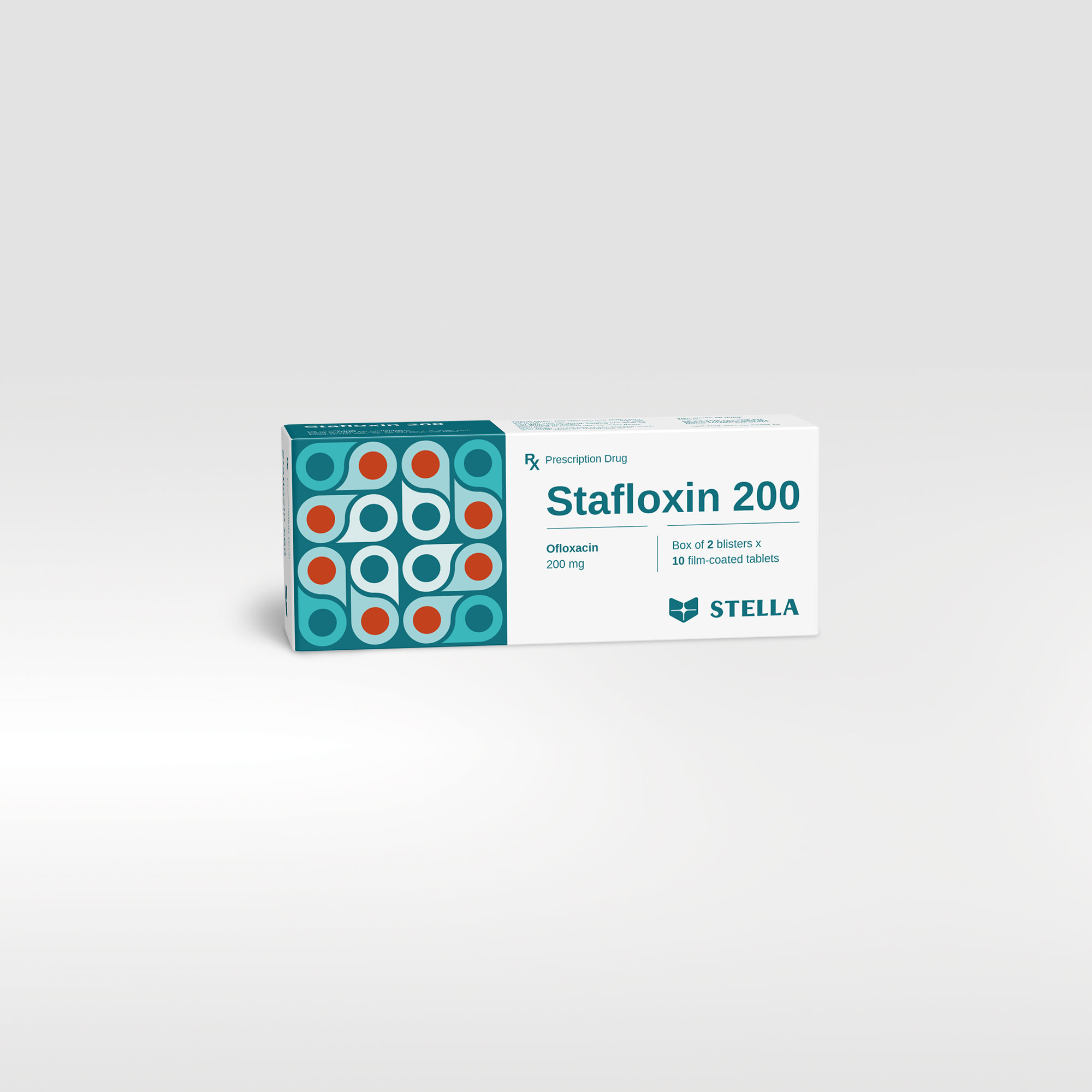Stafloxin 200 Rx
Stafloxin 200 contains ofloxacin, a quinolone-carboxylic acid derivative with a wide range of antibacterial activity against both gram-negative and gram-positive organisms. Stafloxin 200 is indicated for treatments of the following infections when caused by sensitive organisms.
| Pack size | Box of 10 tablets, 20 tablets, 100 tablets. Bottle of 100 tablets. |
| Shelf-life | 48 months |
| Composition | Ofloxacin |
| Dosage forms and strengths | Film-coated tablet: 200 mg |




